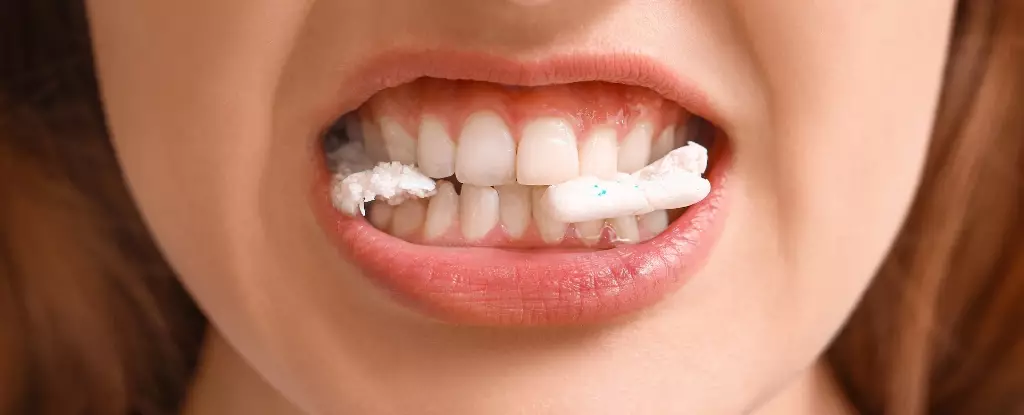In an era marked by environmental consciousness and health awareness, a seemingly innocuous product has come under scrutiny—chewing gum. Recent research from the University of California, Los Angeles (UCLA) reveals startling implications about this popular confection: it could be a source of microplastics, tiny plastic particles that are increasingly polluting our planet and potentially infiltrating our bodies. While this may seem alarming, it also raises deeper questions about our choices and the hidden consequences of our seemingly innocuous habits.
Microplastics: A Rising Concern
Microplastics have emerged as a global menace, infiltrating ecosystems from the highest peaks of the Himalayas to the depths of our oceans. These ubiquitous fragments, measuring less than 5 millimeters, have now been detected in sports drinks, bottled water, and even our very food. The UCLA study highlights gum chewing as yet another pathway through which these particles enter our physiology. This is more than an isolated incident; it reflects a broader environmental crisis where plastic, often deemed disposable, continues to linger and impact human health.
The Research Findings and Implications
In testing the effect of chewing gum, researchers found that an average piece could release around 100 microplastic fragments, an alarming disclosure with potentially vast implications. Imagine the sheer volume: a person who chews about 180 pieces annually may unknowingly be digesting approximately 30,000 microplastic bits. That said, while these findings are disconcerting, the researchers are keen to clarify that there is currently no direct evidence linking these particles to significant health risks.
Despite the absence of definitive conclusions on health effects, the discovery invokes reflection on multiple levels. It is not merely about how many microplastics one may consume through gum, but rather what this signifies about our relationship with the materials we consume daily.
The Ingredients We Can’t See
The research reveals a key paradox: the packaging of popular chewing gums often does not list the specific types of plastics contained, opting instead for vague descriptors like “gum-based.” This lack of transparency speaks volumes about consumer rights and responsibilities. In an age where information is at our fingertips, the ambiguity around materials should provoke curiosity and demand accountability from manufacturers. How can we enjoy a product if we are not made fully aware of its composition?
The study examined both synthetic and natural gum, discovering that both categories contain harmful microplastics. This challenges preconceived notions that purchasing “natural” options equates to making better health choices, demanding a reevaluation of personal consumption habits.
Public Reaction and Expert Opinions
The public’s reaction to such findings can often be one of trepidation, and understandably so. Microplastics are already a concerning topic among environmental groups, and the addition of a product as widely consumed as chewing gum poses significant implications. However, experts within the field urge caution. Some researchers maintain that the amount of microplastics ingested through gum is relatively insignificant when juxtaposed with other common sources. For instance, bottled water has been shown to contain staggering concentrations of microplastics, which far exceed those found in chewing gum.
So should we give up our bubble gum? Experts like chemistry professor Oliver Jones argue against drastic action, suggesting that if these tiny particles are swallowed, they would likely pass through the digestive system without observable harm. The overall narrative here requires a nuanced understanding of risk—while caution is prudent, panic is uncalled for.
Environmental Duty Beyond the Chew
It’s crucial to recognize that the implications of gum consumption extend beyond personal health. Chewing gum as a product contributes to pollution when discarded improperly. The act of spitting gum onto sidewalks creates environmental hazards that further complicate our relationship with plastic waste. This emphasizes a collective responsibility to manage consumption and disposal practices with increased mindfulness.
The furor surrounding chewing gum offers an opportunity for an accountability check—not only for manufacturers but for consumers as well. Instead of dismissing the gum-related research, we should consider how this insight reflects larger environmental patterns and our collective duty to cultivate healthier habits. Addressing microplastic pollution cannot solely be reliant on individuals; it demands systemic change and transparency across all corporate practices, whether in confectionery or beyond.

